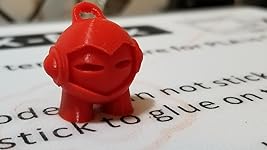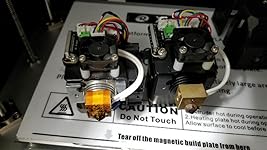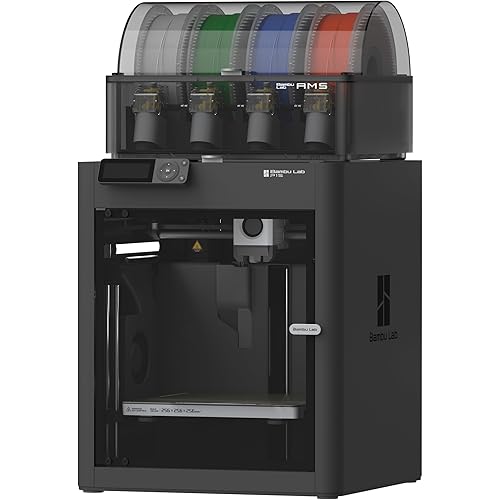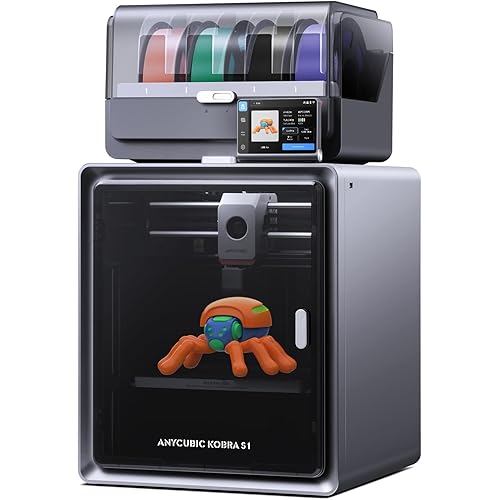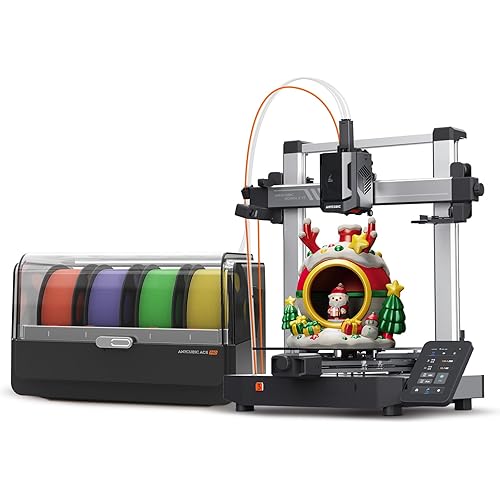R QIDI TECHNOLOGY X-MAXⅡ 3D Printers,New Upgrade,Intelligent Industrial Grade 3D Printer,5 Inch Touchscreen,High Precision Printing with ABS,PLA,TPU,Flexible Filament, Print Size 11.8''x9.8''x11.8''









Notify me when this product is back in stock
Buy Now, Pay Later
- – Up to 36-month term if approved
- – No impact on credit
- – Instant approval decision
- – Secure and straightforward checkout
Payment plans are offered through our trusted finance partners Klarna, Affirm, Afterpay, Apple Pay, and PayTomorrow. No-credit-needed leasing options through Acima may also be available at checkout.
Learn more about financing & leasing here.
Selected Option
30-day refund / replacement
To qualify for a full refund, items must be returned in their original, unused condition. If an item is returned in a used, damaged, or materially different state, you may be granted a partial refund.
To initiate a return, please visit our Returns Center.
View our full returns policy here.
Size: MAX2
Features
- Newly Update 2 Sets of Extrusion SystemsThe two sets of extruders of X-MaxII are upgraded to double-gear extruders, with higher printing accuracy, better heat dissipation and less clogging.Extruder A: It is suitable for printing filaments such as PLA,ABS,PETG,TPU,etc, the maximum temp is 250C. Extruder B is a high-temp extruder. Its nozzle is made of hardened steel material with good wear resistance, heat resistance and corrosion resistance, which can reduce the wear and tear on the inside and outside of the nozzle when printing for a long time.Can print with PC, nylon and carbon fiber,the maximum temp is 300C.
- Filament Runout Detection& Resume Printing X-MAX II equipped with a filament runout sensor, it can monitor the supply of filament.If your printer runs out of filament or breaks during printing, the sensor will alert you.If a power outage occurs during the printing process, the printer will automatically save the breakpoint.
- High Precision and High Stability X Max II innovatively adopts higher-cost industrial-grade dual Z-axis support and works in conjunction with two axes motors. Large-size 3D printers are more stable when printing larger models without jitter. Especially when the model is printed continuously for more than 24 hours, the accuracy remains stable. It is very suitable for engineering and mass production of professional quality printing.The large print size is 300x250x300mm.
- Industrial Quality X-Max II 3d printers shell is made of high-quality engineering plastics, which is beautiful and safe. X Max II uses high-standard accessories, motors, motherboards, bearings, etc. It has reliable quality and long service life that you can trust to support you throughout your 3d printing journey.
- About R QIDI TECHNOLOGY X-MAX IIX-MAX II provide free one-year warranty, lifetime technical assistance.Professional after-sale service team will help customers solve the problem within 12 hours.
Brand: R QIDI TECHNOLOGY
Material: Pla,Steel
Color: Black
Product Dimensions: 9.8"D x 11.8"W x 11.8"H
Item Weight: 28 Kilograms
Product Dimensions: 11.81 x 11.81 x 9.84 inches
Item Weight: 61.6 pounds
Item model number: QDMAX201905
Is Discontinued By Manufacturer: No
Date First Available: October 11, 2018
Manufacturer: RUIAN QIDI TECHNOLOGY CO.,LTD
Frequently asked questions
Similar Products
Top Amazon Reviews
🚀 Abunda's Overview
This is our summary and key points to consider based on customer reviews.
The X-Max 3D printer, manufactured by Qidi, has received numerous praises from customers for its vast capabilities, excellent quality and impressive build volume. Many users appreciated its ability to successfully print with different materials- including PLA, PETG, ABS, and polycarbonate, among others. The printer is well-built, featuring a solid enclosure, magnetic build plate with two types of surfaces, and a highly accurate Z-axis. Its software, Qidi Print, is easy to use and includes a useful preview window of the object being printed.
Pros
- 🌟 Exceptional ability to print in various materials including high-temp materials
- 🌠 Comes with two build plates and different hot-end assembly options
- 💠 Solid, high-quality build and large volume
- 🌈 Easy-to-use software that includes a preview function
- ☁️ Effective WiFi printing with Qidi's own software
Cons
- 💔 Transferring files via thumb drive for non-Qidi slicers can be inconvenient
- 🌧 Some users may find the touchscreen interface not up to the mark
Should I Buy It?
Definitely, the X-Max 3D printer from Qidi would be an excellent investment for both beginners and experienced operators. Its flexibility in handling numerous types of materials, laudable build volume, and user-friendly software make it a worthwhile product. The minor issues such as the need for thumb drive file transfer when not using Qidi slicers are outweighed by its overall versatility, quality, and performance. Additionally, the customer support from the manufacturer is noted to be exceptional which is a significant advantage.

